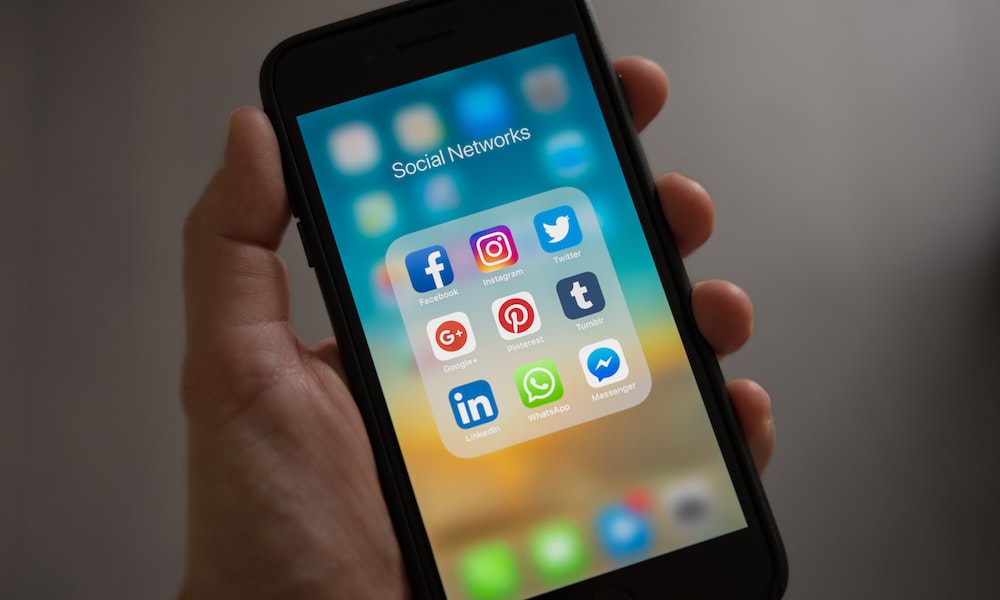SaaS marketing refers to a unique set of strategies and tactics used to position and sell subscription-based products and services. Competition in the field is growing fast. Thus, an impressive set of features will not make people buy from you. To stand out requires a competent approach and investments in the right marketing channels. Therefore, SaaS companies should make great efforts to attract leads and communicate value to them in the right way.
Today we have collected for you those strategies and tactics that you can start implementing right now to make the process of lead generation easier and more effective.
.png?width=1000&name=Blog%20posts%20designs%20(2).png)
Speaking about attracting leads, we should start with understanding differences in the B2B market and the features of the buying process. This knowledge can help you to choose the right approach.
What drives purchasing behavior in B2B?
The B2B buying process is difficult and involves many pillars. Let's have a look at several important milestones that you need to think about when you work on your B2B lead generation processes.
- For B2B, reputation means a lot. When companies make purchasing decisions they often overestimate product quality if the brand is well known and has an excellent reputation, especially in mature markets.
- The purchase has greater significance for B2B customers because it translates to lasting relationships. This lengthens the process between first contact and purchase.
- Within B2B, customers simultaneously evaluate many suppliers who can solve their needs.
- The life cycle cost plays a greater role than the purchase price.
- B2B is more complex due to the many people involved, which can result in the purchase of something that can be accepted by all to the detriment of a better alternative.
- B2B buyers evaluate content more carefully, are less prone to impulses, and demand a higher number of contact points. On average, it involves between 5-7 touchpoints and personal contact with sales reps.
- However, many cloud products require the involvement of tech-savvy people. Usually, they want to test the product themselves, hence contact with the sales rep can happen much later in the buying process.
To sum up, these characteristics of the buying process can definitely influence your marketing efforts like campaigns, assets, and content. You should take them into account when working on acquisition marketing.
Now, that you've grasped the fundamental features, let's look at strategies and tactics that can help you to increase lead generation and boost your sales in B2B SaaS.
How do you win leads in B2B SaaS?
1. Know your customer
Let’s start with the basics. To maximize the outcome of your marketing efforts and not waste money you need to know who your target audience is. Start with developing the Ideal Customer Profile (ICP) and 2-3 Buyer Personas. You need to understand their preferences and how your Personas buy to provide the most positive customer experience.
Related article: Your guide for creating a powerful B2B buyer persona
In recent years, users encompass more and more devices and channels. Knowing who you target will help you reach these people through the channel they want and with the message that correlates best with them.
2. Get the correct data
Having the right data and established processes for its handling improves the company's ability to communicate with the right people at the right time and with the right message. Otherwise, you risk having limited knowledge about your prospects and customers.
 (Image: Pexels)
(Image: Pexels)
That’s why it's critical for businesses to have a modern and relevant CRM platform as well as system integrations in order to better understand and store all customer information and interactions in one place.
And of course, if you use Google Analytics and want to keep collecting data, don't wait until the deadline - think of moving your Google Analytics to a GA4 already today.
Do you feel like time is running out and you need help with shifting to GA4? We are here for you - Book a free consultation
3. Merge Inbound Marketing and ABM
Inbound Marketing is a business methodology based on creating valuable content to increase brand awareness, engage audiences and usher them to purchase. It allows the company to reach people who easily qualify as leads.
It entails attracting them through search engines, blogs, and social media, engaging via channels relevant to specific people, and providing a one-of-a-kind experience.
Account-Based Marketing (ABM) in its turn is a narrowly focused growth strategy that works in B2B by aligning marketing and sales functions to create a personalized experience for accounts and satisfy key decision-makers with pertinent content. Since buying decisions usually involve many people in B2B, ABM helps build a relationship with each of them.
Thus, both Inbound Marketing and ABM have a similar approach and aim to deliver a unique customer experience from the top of the funnel with a deep understanding of the target audience. By combining both methods, the entire strategy can be strengthened.
For example, you can create content that will be of interest to each key person within the target organization. You can describe the financial benefits of working with you to the CFO, explain technical features and usability to the CTO, and demonstrate how you can help increase revenue for the CEO.
4. Use self-serve onboarding
Self-serve onboarding, as the name implies, allows your users to onboard themselves. It is beneficial because it gives users control of their initial experiences.
Providing your prospects with opportunities to "touch" your SaaS product means that you're enabling users to understand the value faster and discover certain vital features. That's why demos and trial periods, with comprehensive documentation, are the essential methods of acquisition and differentiating from the competition.
5. Combine different tactics
Of course, we don't forget about the well-known methods that should not be missed for lead generation in B2B SaaS. Below we have listed tactics that will allow you to get quality leads faster and measure the result better. Use them in combination for maximum effect.
1). Website performance and SEO
Many marketers are so busy creating material that they sometimes forget that not only quality but also accessibility matters. After all, even the most optimized content will not help if the visitor is unable to access it. Pay attention to website performance - how quickly a website's pages load and display in a web browser. Remember, that you should aim for a load time of less than 2 seconds.
Continue with Search Engine Optimization (SEO) and perform the audit - check the technical problems and content gaps that hinder marketing, including volume, structure, uniqueness, and quality. It's also necessary to pay attention to keyword optimization and the current position of the website in the target regions.
Pro tip: Use a free online tool Website Grader that can help you to assess your website against key metrics like performance, SEO, security, and mobile readiness.
 (Image: Pexels)
(Image: Pexels)
Perform keyword research, find out what your audience is looking for, and provide them with answers to their questions. We also recommend comparing content, search positions, and external optimization with competitors on a regular basis.
Relevant KPIs:
- Pageviews
- Sessions
- New visitors
- Returning visitors
- Traffic sources
- Bounce Rate
Related article: How HubSpot CMS Hub will help you rank higher on Google
2). Content Marketing
Working with Content Marketing is a perfect strategy because it’s flexible and contains many variations. You need to provide your visitors with the material easily accessible on the website, on social media, through emails, and on all available external sources such as information portals.
Your goal should be to educate your visitors. That is why the main forms of content can be guides, whitepapers, product articles, and reviews.
Relevant KPIs:
- Website Traffic
- Social media followers
- Subscription signups
- Mentions
- Conversion Rate
3). Social Media Marketing (SMM)
Social media's role seems to be underestimated in B2B marketing. However, it plays an important part in three-quarters of B2B purchases and in 82% of purchases by C-level executives. That’s why you should cover the main social networks where your audience is.
Create various high-quality content for each network and don't duplicate the same post because every social network has a distinctive sentiment. It's necessary to be relevant to the needs, but also to the communication type on every social platform.
 (Image: Pexels)
(Image: Pexels)
Relevant KPIs:
- Reach
- Engagement
- Impressions
- Mentions
- Social ROI
- Social listening
- Likes
- Shares/reposts
4). Email Marketing
Create an easy way for your visitors to subscribe. This will give you immense opportunities to develop communication with them.
Your mailings should provide value. Don't send the same email to everyone. Better use segmentation which allows you to create a personalized experience that can have an impact on engagement.
Relevant KPIs:
- CTR
- Conversion Rate
- Bounce Rate
- Unsubscribe Rate
- Email Sharing/Forwarding Rate
- List Growth Rate
- ROI
5). Event Marketing
Events allow SaaS providers to highlight their unique selling points and generate leads. Another benefit is staying in touch with influencers and demonstrating the company's expertise.
If you haven't tried this type of marketing yet, be sure to start with something simple, like a webinar. Other more advanced types of events can be online summits, podcasts, workshops, and even live broadcasts.
Relevant KPIs:
- Registrations
- Check-ins
- Revenue
- Cost-to-revenue ratio
- NPS
- Social media mentions/engagement
- Lead acquisition
- Conversion Rate
Just like that! By focusing on the above-mentioned tried-and-true strategies and tactics, you can create a steady flow of good-quality leads into your pipeline.
As you see, every lead generation process has a value-based approach and the customer in the center. Creating value in every piece of information you provide to your users takes time and effort, but if it brings to building meaningful relationships you're on the right path.
Are you struggling with lead generation and want more advice? Book a Free Consultation with us